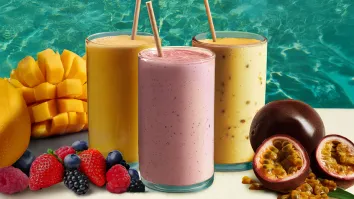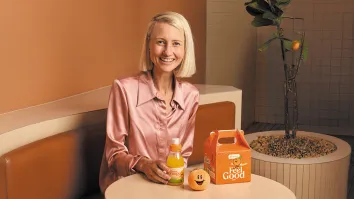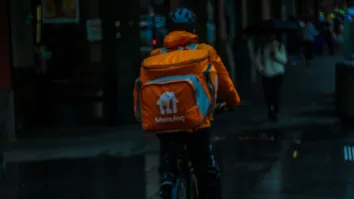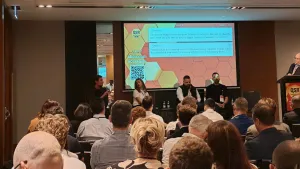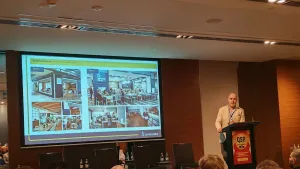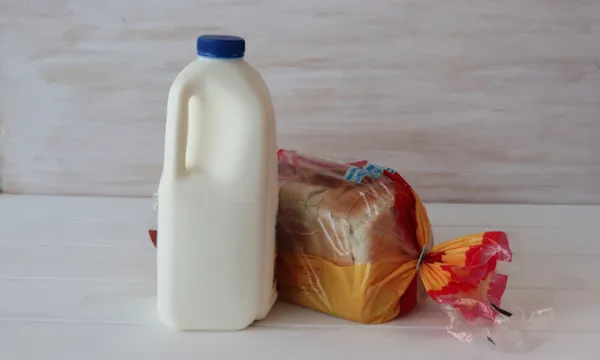
Will off-premise restaurants be the new face of a post-COVID-19 industry?
A growing number of chains are selling directly to consumers amidst social distancing restrictions.
These days, the restaurant experience can no longer start anywhere else but home.
As operators feel the financial impact of ceasing dine-in services for the foreseeable future due to the COVID-19 pandemic, the industry has made the inevitable jump in augmenting their off-premise business models.
This initially took form in contactless delivery, a feature that has been mainstreamed by QSR pizza chains Domino’s and Pizza Hut and the country’s largest aggregators to assure consumers of their adherence to strengthened hygiene practices.
Then came the proliferation of restaurant pantries, with The Coffee Club and McDonald’s offering grocery ‘essentials’ like eggs, bread, milk in response to growth in at-home dining and surging demand for supermarket-type services - a strategy also executed by Subway and Panera Bread amongst others in the U.S., whose restaurant industry is also being battered due to a similar lockdown.
In separate interviews with QSR Media, restaurant executives say this type of direct-to-consumer model is not going to go away anytime soon.
The Cheesecake Shop, for example, promoted its click-and-collect service to enable customers to limit time in-store due to pre-order and pre-payment and also launched its next-day delivery service.
“The pandemic has super-charged our next-day delivery service and we have seen rapid growth. The delivery aggregators also have a niche with our product and we are seeing similar strong growth from there, albeit from a small base. Inevitably, we believe this will elevate the importance of delivery services in a post-COVID world,” managing director Ken Rosebery said, adding that they are offering smaller-sized options for customers due to social distancing requirements.
“It's all about convenience and added service for customers - a one stop shop to acquire essentials and staple items for home consumption,” Piccolo Me operations manager Kevin Dorsey explained.
The coffee chain explored this direct-to-consumer delivery model, launching its “COVID-19 Coffee Survival Kits” which they say garnered “extremely positive” feedback from customers.
“Many customers have an opportunity to obtain products [or] brands which they didn't have access to before [such as] their favourite cafe's preferred almond/soy milks, proprietary coffee beans and pods, etcetera,” he said, also noting the importance of being featured on a variety of delivery apps.
Seagrass Boutique Hospitality Group says they are looking to differentiate in this emerging field by offering raw meats.
“Our view here is that people will use the brands they know for the things they believe those brands excell at and have a reputation for. So in our case, we are focused on quality food and meals, either take away or via delivery. We are including raw meats as that is an area of high reputation for The Meat & Wine Co and 6 Head. We don't have plans to market generic grocery items as these can be easily accessed from supermarkets and fresh produce retailers,” chief marketing officer David Ovens explained.
“Many people will try new brands in addition to their favourites. The brands and businesses that best understand customer needs, how customers use these channels and what does and doesn't motivate the purchase decision will do relatively well.”
IbisWorld senior industry analyst Matthew Barry explained that this pivot by chains to deliver grocery packages is a result of a majority of restaurants being able to purchase produce through wholesalers and thus less affected by supply constraints seen in supermarkets and convenience stores.
“In addition, popular restaurants and celebrity chefs have begun to include recipes and video classes. For example, in Melbourne, Atlas Dining, is offering ingredient boxes with live cooking classes. Mid-range and high-end restaurants are expected to benefit from this trend, competing with established brands, such as Hello Fresh,” he said.
Barry observed that many restaurants have also begun to sell ready-to-eat meals, anticipating that these shifts in business models will alleviate some short-term constraints.
“However, small to medium-sized brands may struggle to compete in meal and grocery delivery services with more well-known restaurants that have consumer loyalty and economies of scale,” he said.
Virtual brands, collaborations with supermarkets
Aside from meal and grocery delivery models, Barry sees virtual brands as a means for chains to minimise operational costs during the lockdown.
“Virtual restaurant brands only operate through online takeaway platforms, such as UberEats, and therefore have been affected less by the Federal Government ban on dining-in at
restaurants. Virtual restaurants are able to rent cheaper locations in high density living areas as they do not compete for prime restaurant locations. Furthermore, no waitering staff are needed,” he said.
Virtual brands, he said, can maximise this opportunity by placing virtual kitchens in high density locations with comparatively cheaper rent costs to normal restaurants.
“Using special deals and promotions on these online delivery platforms can also boost sales. Furthermore, a strong social media presence allows virtual restaurants to display their food on offer and interact with customers. Overall, restaurants that pivot to a virtual brand are expected to increase profit margins, by having lower operating costs during this time of weaker consumer sentiment,” he said.
Barry expects restaurants to open more virtual kitchens, offer ingredients boxes and ready-to-eat meals in the short-term. Other opportunities for chains, he says, could include collaboration with local supermarkets and restaurants to offer ingredient boxes with the restaurant’s recipes.
“Furthermore, restaurants could partner with online health platforms offering specialised health-conscious meals. These other business channels could increase brand awareness and alleviate some of the profit constraints in the industry,” he said.





